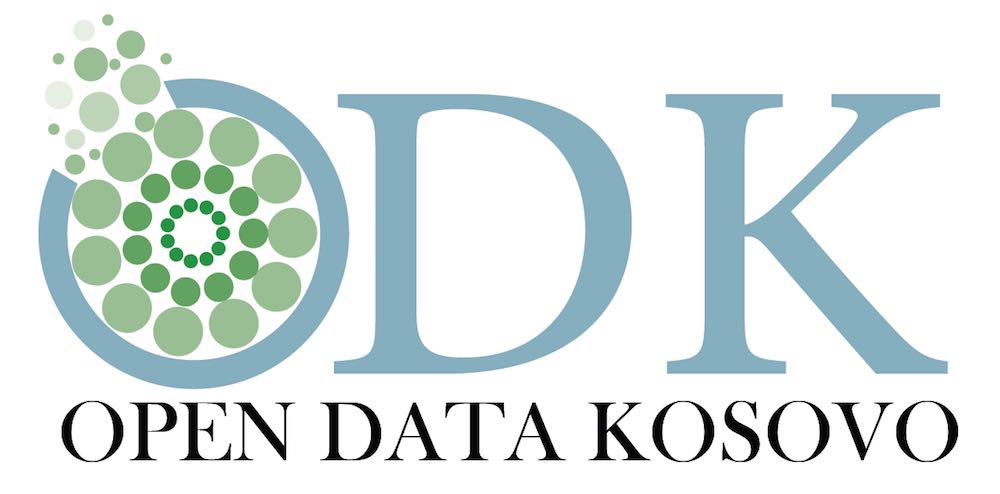In recent years, discussion about economic concepts like inequality and income mobility has been everywhere. Thrust into the spotlight by the global financial crisis, they have rarely left the front pages thanks to Thomas Piketty’s Capital in the Twenty-First Century and a series of rolling financial crises in Europe. These days you can’t even enjoy your artisanal quail egg omelet and fair trade coffee without some bearded, tweed wearing, artisanal whiskey distilling, overgrown trust fund baby complaining about how unfair it all is, in between cashing rent checks from his parents.
When it comes to discussions of inequality though, one of the underlying assumptions that few are willing to challenge is that the drivers of inequality largely boil down to nepotism and inherited wealth, while the answer to most inequality based problems comes down to one idea: meritocracy.
What is a Meritocracy?
Meritocracy is a system in which the people who hold power (through democratically elected means or otherwise) are those that are most deserving based on individual merit. In common use, it is usually taken to be slightly broader than that – a world in which money and success are allocated, perfectly, to those who are deemed to deserve it the most.
In an increasingly polarized political system in the US, meritocracy – or ‘the right to rise’ – is often the only thing that politicians on both sides of the aisle seem to agree on. The ideal of meritocracy is so ingrained in the US that Americans are famous for their belief that hard work will be rewarded with untold wealth and success. But this belief is far from unique to the US. In Australia meritocracy has long been considered part of the national identity with politicians of all stripes often talking in jingoistic terms about ‘the fair go’.
For all the talk of meritocracy though, how feasible is it in the real world? What would be some of the major hurdles to implementing a more meritocratic system?
Defining Merit
The first question that should arise whenever meritocracy is discussed is how is merit defined? There are 4 basic criteria that most commonly are thought of as contributing to merit:
- Qualifications
- Work ethic
- Intelligence
- Experience
For almost all competitions where there are winners and losers – jobs, university positions or other – some combination of these traits will generally be used to decide a winner. To keep things simpler, let’s focus on the job market for now.
The first thing to consider when defining merit for a given job is that to have an accurate measure of merit, the criteria need to be modified for every position. Jobs requiring manual labor place a higher value on work ethic but little value on qualifications. Jobs in tech often place higher value on intelligence, but less on formal qualifications and, depending on the role, large amounts of experience can be seen as detrimental. Most jobs will require applicants to possess experience in one or more specific areas.
For the most part, this customization of criteria for each job is already being done – a job advertisement is essentially a statement of the criteria that merit will be assessed by. But the question is, are those criteria actually the correct ones to identify the best possible person for a given job? I believe the answer to that question is a resounding “no”. Let me explain why.
Let’s look at a common example that anyone who has tried changing sector, industry or country in his or her career will be able to relate to.
Imagine you have been working for around 10-15 years and have spent all of that time in one industry[1]. During that time you have picked up a lot of useful workplace skills, spreadsheets, experience with various applications, writing skills, general how-not-to-piss-everyone-off skills and so on. Now you want a new challenge that will require a lot of the skills you have, but in a different industry. You approach a recruiter, bright eyed and excited by the possibilities, but despite your best efforts to sell your skills as relevant, the recruiter basically discards your experience as worthless and tries to push you towards a low level role or something in your old industry.
This experience is a simple example that reveals an underlying truth – if we were being truly meritorious, there could be no fixed criteria for merit for any job because there is no way to preemptively identify what combination of skills and experience will ultimately prove to be the most valuable.
The possibilities for what combination of skills and experience lead to the best performance in a role are endless. Many successful business owners do not have MBAs. Many of the best investors on Wall Street do not come from finance backgrounds. Some of the best NFL punters are ex-Australian Rules Football players. What people who excel tend to have in common is a combination of skills and experiences that allows them to bring a different perspective to a problem.
Yet, despite history proving time[2] and time again[3] that different perspectives are often vital to important insights, it is a rare employer or recruiter that will take a bet on a candidate with ‘unusual experience’ rather than a candidate who ticks all the boxes. The reason for that is simple – it is safer. Choosing the candidate that ticks the boxes provides cover (“I gave you what you asked for”) and it gives a better guarantee of an acceptable level of performance. The unusual candidate could be fantastic – but they could also be a complete flop who turns out to be way out of their depth.
Unfortunately, this is only the first hurdle for a true meritocracy – if merit is a difficult thing to define, it is an even more difficult thing to measure.
Measuring Merit
Once we get past the step of deciding what criteria will determine the most deserving applicant, the next step is deciding who best meets those criteria. A quick look at the application process for college admission or a technical job will give you an instant appreciation for the lengths that people will go to try and get an accurate assessment of an applicant’s true merit.
Tests, interviews and essays are probably the most common tools used to assess merit but all can be (and are) gamed by people who understand the system. Material for tests can be rote learned with little to no understanding necessary. Interviews are notorious for being poor predictors of talent, which makes sense when you consider that the most confident people are often delusional. Essays, aside from providing evidence of basic writing skills, are assessed subjectively.
Even if these tools for assessing merit were designed in such a way as to prevent gaming the system, these are still three very narrow tests of ability. As Megan McArdle explains, the experience in China shows that selecting for people who do well on exams gives you… a selection of people who do well on exams.
Assumptions and Prejudice
One interesting side effect of the difficulty in determining merit is it leads to people basing their assessment on completely superficial qualities (at least partially). A good dress sense, physical attractiveness, and being an eloquent speaker are just some examples of relatively superficial qualities people use to assess intelligence and merit. As frustrating as this can be for the unshapely, poorly dressed, mumblers out there, these are all things that can be improved and worked on (at least to some degree). Others are subject to prejudices that cannot be addressed – the impact of race on the ability to get interviews, for example, is well established.
Another concerning trend is the increasing use of someone’s current level of success/wealth as an indicator of merit. That is, if someone is wealthy and/or successful, they must be someone who is highly intelligent and works harder than everyone else. This line of thinking is dangerous for two reasons:
- Too much value is placed on the opinions of wealthy and successful people – particular on topics outside their domain. Anyone who has listened to Clive Palmer or Donald Trump speak should know that is a mistake.
- The implicit assumption made when you believe wealthy and successful people are fully deserving of their place in the world is that anyone who is poor and unsuccessful is also fully deserving of their situation.
Evidence of this thinking is present everywhere to some degree, but seems particularly prevalent in the US[4], where TV shows like Shark Tank are extremely popular and prominent CEOs are regularly asked for their opinions on public policy issues.
This belief system can largely be explained as the flip side of the optimistic view American’s have of their economic prospects. As this paper from the Brookings Institution highlights, American’s are far more likely to believe hard work and intelligence will be rewarded and yet are second only to the UK in terms of how closely correlated a son’s earnings are to his fathers (i.e. hard work has the least chance of improving your situation). If you truly believe that hard work and intelligence is all you need to be successful, you must also believe that people who are currently experiencing success have those attributes.
Best Person for the Job
Going back to our problems with creating a meritocracy, everything discussed so far has overlooked a key factor in this endless quest to find the most deserving – people are not cogs that can be simply transferred in and out of a machine seamlessly. The person who ‘deserves’ the job on merit (provided we can define it and measure it accurately) is often NOT the best person for the job. The best person for the job is often determined by qualities such as:
- how that person fits in with the team culture,
- their personality type, and
- how they respond to authority (or the lack thereof).
These traits are all key factors in how well someone will perform in a given role and yet none would typically be thought of as meritorious qualities.
This realization is not new. Employers and hiring firms have been pushing the idea of the ‘beer test’ (asking yourself which of the candidates would you most like to go for an after-work beer with) for some time now. But it does beg the question – what would happen if a company simply hired the ‘best’ candidates for each position without considering whether these people will work well together? Would that team be more productive than a team that hired less ‘deserving’ candidates but aimed to build a harmonious work place? The entire body of management knowledge (and every buddy cop movie ever made) would tell us otherwise.
Summary
One thing that becomes obvious when you start thinking about how a true meritocracy would actually work is how difficult it would be to implement:
- Many of the criteria we associate with someone being deserving of a role or position are subjective or exclude applicants who would in fact be far superior.
- Our methods of assessment are often deeply flawed, subject to gaming and our own prejudices.
- Selecting the most objectively deserving candidates is not guaranteed to provide the best results anyway.
Yet, despite the reasons above hopefully being enough to give pause the next time someone begins expressing frustration with the current lack of meritocracy, all of these issues are only really logistical problems.
There is a good argument to be made that we can and should try to improve on all of these things – that we should aim to get better at identifying the right people and refine our methods of assessing skills. We should pay more attention to team fit and personalities when selecting the best candidate. It is hard to imagine the world being a worse place if employers were more open minded about what skills might be valuable to their company and sociopaths were less likely to impress during an interview.
However, the next question is how far should we take this. What does a truly meritocratic society look like and is it something we really want? That is the subject of discussion in Part II in this series on meritocracy.
[1] You can easily replace ‘industry’ in this story with ‘company’, ‘field’ or ‘country’.
[2] Einstein famously worked at a patent office where his work often exposed him to the transmission of electric signals and electrical-mechanical synchronization of time. Exposure to these topics helped him to arrive at his conclusions about the nature of light and the connection between space and time.
[3] Steve Jobs often talked about the importance of a calligraphy class he took in shaping what fonts were best used in operating systems.
[4] Australia’s proclivity to tall poppy syndrome does have some positive side effects






